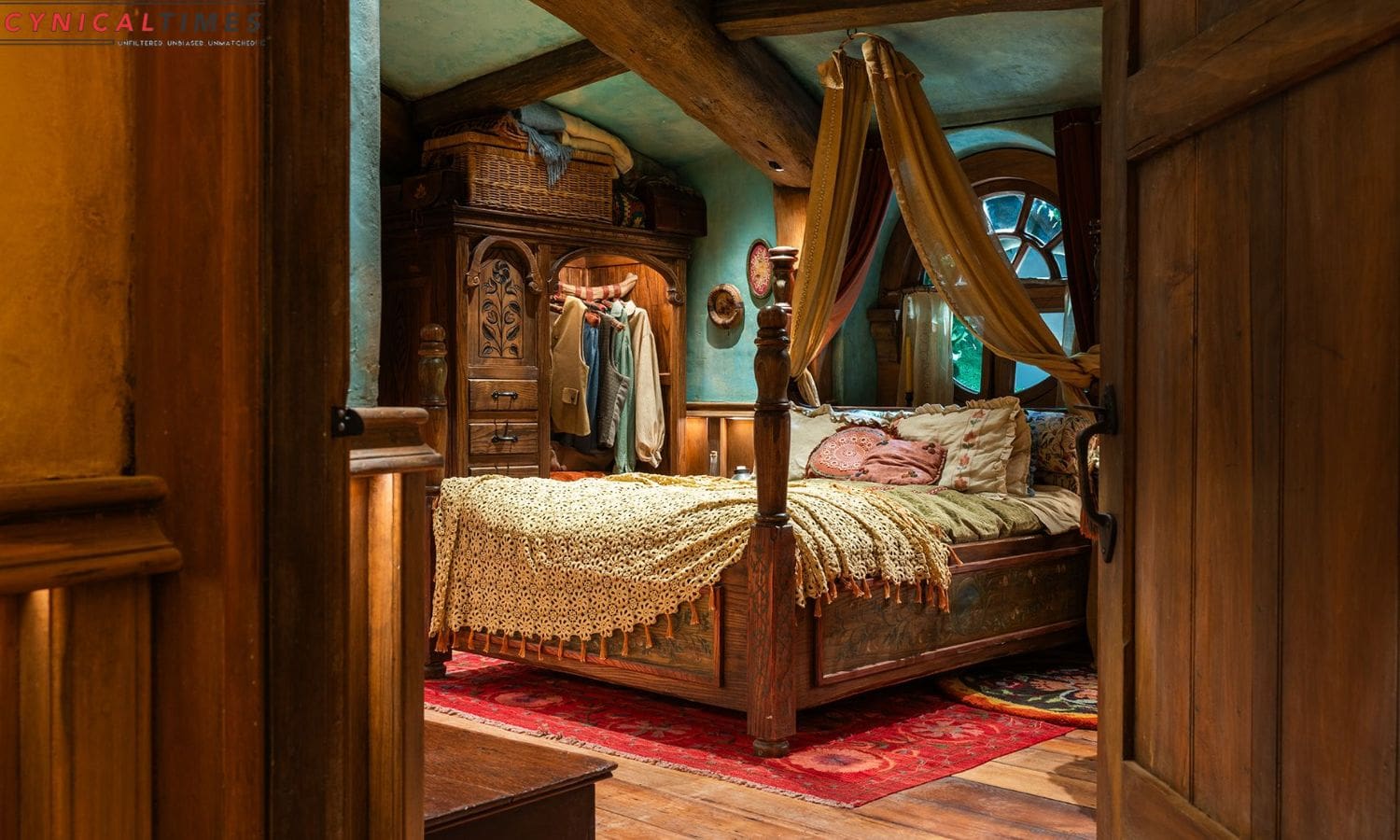Hobbiton Enchanting Holes Revealed: In the picturesque landscapes of New Zealand, where the breathtaking scenes of “Lord of the Rings” come to life, lies the renowned Hobbiton Movie Set. Originally a sheep farm near Matamata, this unassuming location gained fame when director Peter Jackson chose it for his epic trilogy. Today, visitors can immerse themselves in the charm of Hobbiton, with two fully decorated Hobbit Holes now open to the public. These Holes, adorned by the talented designers from the movies, offer a glimpse into the cozy, welcoming homes of hobbits.
Since 2002, Hobbiton has been a popular tourist attraction, but until recently, most Hobbit Holes were off-limits. Now, travelers can explore the intricately designed interiors of these Holes, featuring themed rooms like entry halls, bedrooms, bathrooms, kitchens, dining rooms, pantries, and parlors. Each Hobbit Hole provides an identical yet unique experience, allowing fans of “Lord of the Rings” to revel in the authentic details.


Also Read: Revolutionizing Group Travel: Explore Connect and Thrive with Next Gen Tours
The Hobbiton movie set tour, priced at $120 NZ (approximately $74 USD) for adults and $60 NZ (around $37 USD) for children aged 17 and under, includes the opportunity to wander through these delightful Hobbit Holes. Director Peter Jackson, expressing his delight at this development, considers Hobbiton his favorite filming location from the “Lord of the Rings” trilogy.
For those planning a “Lord of the Rings” pilgrimage in New Zealand, Hobbiton is just the beginning. With over 150 filming locations across the North and South Islands, enthusiasts can explore iconic sites like Tongariro Alpine Crossing, where Mount Ngauruhoe served as Mount Doom, or ski on Mount Ruapehu, doubling as Mount Doom and parts of Mordor. Each location holds a piece of Middle-earth’s magic, making New Zealand a haven for fans seeking to relive the cinematic wonder of J.R.R. Tolkien’s masterpiece.
Whether tracing the steps of Aragorn, Legolas, Gimli, and Gandalf at Mount Sunday, the Home of Edoras, or marveling at the Helm’s Deep site from Mount Sunday, the journey through New Zealand’s “Lord of the Rings” locations promises an unforgettable adventure. Hobbiton’s newly accessible Hobbit Holes add a touch of enchantment, inviting visitors to step into the beloved world of hobbits and experience the magic that captivated audiences worldwide. For “Lord of the Rings” devotees, the allure of Middle-earth beckons, and Hobbiton stands as a testament to the enduring magic of J.R.R. Tolkien’s creation.
Our Reader’s Queries
What happened to The Hobbit holes?
In 2009, Jackson returned to the site where all but 17 bare plywood facades had been demolished to film The Hobbit trilogy. As a result, 44 Hobbit holes were permanently reconstructed and left behind. To celebrate the 10th anniversary of The Hobbit: An Unexpected Journey, guests will now have the unique opportunity to access these holes for the first time ever.
Where is the real hobbit hole?
Nestled in the verdant farmland of Hobbiton Movie Set, just a couple of hours south of Auckland, lies the breathtaking Wairere Falls. This stunning natural wonder boasts over 44 charming hobbit holes, each with its own unique character, including the iconic Bag End – the beloved home of Bilbo Baggins. With its lush surroundings and enchanting atmosphere, Wairere Falls is a must-visit destination for anyone seeking a truly magical experience.
Is the tree in Hobbiton fake?
The majestic oak tree that stands atop the hill overlooking Bag End is not what it seems. In fact, it is a cleverly crafted replica made entirely of fiberglass. Its lush foliage, which appears so lifelike, is actually made from silk and was imported all the way from Taiwan. Each leaf was painstakingly attached to the tree by hand, and whenever they began to fade in the sun, a skilled artisan was hired to repaint them one by one. Despite its artificial nature, the tree remains a beloved landmark in the area, admired by all who pass by.
Was Hobbiton torn down?
The initial hobbit hole facades were made from untreated timber, ply, and polystyrene, which made them less durable. They were partially dismantled after filming. However, for The Hobbit: An Unexpected Journey, the set was reconstructed in a more permanent manner in 2010, and filming commenced in 2011.

